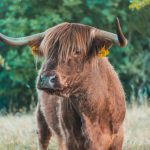In the realm of domestic animals, cats have always held a special place. Their elusive nature, playful antics and unique personalities make them beloved pets in many households. However, under the glossy sheen of their charm, there exists a more feral side. Domestic cats, especially those with access to the outdoors, have a significant impact on local wildlife. This article aims to delve into the impacts of domestic cats on the UK’s wildlife and discusses potential solutions to mitigate these effects.
The Role of Domestic Cats in Predation
Domestic cats, regardless of their pampered lives indoors, are essentially predators at heart. Their hunting instincts are inborn and persist irrespective of the abundance of food provided by their human owners. Studies available on Google Scholar and Crossref have shown that cats in the UK are responsible for the deaths of millions of birds and small mammals each year.
Cela peut vous intéresser : How should one handle an encounter with a seal pup on UK’s beaches to avoid distress?
This predation by cats contributes significantly to the decline in bird populations, and affects the balance of the local ecosystem. The Royal Society for the Protection of Birds (RSPB) carried out a study revealing that cats are responsible for the death of 55 million birds every year in the UK. These estimates are alarming as they indicate the severe impact cats have on native wildlife species.
Free-Roaming Cats and Their Impact
While all cats have the potential to hunt, the impacts are more profound for those with access to the outdoors. Out of approximately 10 million cats in the UK, around 70% have the freedom to roam outdoors. These free-roaming cats pose a higher risk to wildlife as they venture into habitats, hunting and killing native species.
A lire également : What innovations are UK researchers pursuing to prevent bird strikes at wind farms?
A research article published in the Journal of Wildlife Management found that free-roaming cats killed more than twice as many animals than owned cats. Feral cats, in particular, rely on catching prey for their survival, contributing to the overall predation statistics.
Additionally, it’s not only the hunting habits of domestic cats that pose a problem for wildlife. Research also points out that their presence alone can cause significant stress to birds and other small animals, leading to changes in their behaviour and potentially impacting their breeding success.
Domestic Cats: Threat to Endangered Species
Domestic cats can pose a severe threat to endangered wildlife. The domestic cat’s natural hunting instincts lead them to prey on various animal species, regardless of their conservation status. As per the studies available on Google Scholar and Crossref, cats in the UK have been implicated in the decline of various protected species, including the common dormouse and the European Nightjar.
Cats are not selective predators, meaning they do not differentiate between common prey and endangered species. This indiscriminate hunting behaviour has severe implications on the preservation efforts for these threatened animals.
Potential Solutions and Cat Welfare
Addressing the issue of cat predation on wildlife without compromising the welfare of the cats themselves is a complex matter. However, there are some potential solutions to this problem.
One simple step cat owners can take is to keep their cats indoors, especially during dusk and dawn when wildlife is most active. However, keeping cats indoors all the time is not practical or beneficial for the cat’s wellbeing. Cat owners can consider building a cat enclosure or ‘catio’ which allows their cat to enjoy the outdoors without posing a risk to wildlife.
Another alternative is using collar-mounted devices, such as bells or bibs, to reduce a cat’s hunting success. A study published in ‘Applied Animal Behaviour Science’ found that the use of such devices significantly reduced the number of birds and mammals caught by cats.
Promoting Responsible Ownership
Promoting responsible cat ownership is crucial in the effort to reduce the impact of domestic cats on UK wildlife. Owners should be well-informed about the potential ecological impacts their pets can have, and be encouraged to take steps to minimise this.
Public education campaigns, enhanced collaboration between animal welfare organisations, conservation bodies, and veterinary professionals can help in spreading awareness amongst cat owners. Owners can also be encouraged to neutify their pets to prevent the increase of feral populations.
In this interconnected world, the balance of the ecosystem relies on every inhabitant, including our beloved domestic cats. Recognising the impacts they have on wildlife and taking steps to mitigate them will ensure a healthier environment for all.
Role of Domestic Cats in Disease Spread
Apart from the physical threat through predation, domestic cats can also act as carriers of diseases that can potentially affect wildlife. Diseases such as Toxoplasmosis, caused by the parasite Toxoplasma gondii, can be spread by cats to a wide range of animals, including birds and mammals. Some studies available on Google Scholar and Crossref indicate that this parasite can have significant effects on the behaviour and survival of its hosts.
Similarly, free-ranging domestic cats are also known to spread the Feline Immunodeficiency Virus (FIV), which can contaminate the local feral cat population. While the virus does not typically affect non-feline species, it can have a devastating impact on feral cat populations, disrupting the local ecosystem.
Additionally, Felis catus can also spread the Feline Leukemia Virus (FeLV), another disease primarily affecting cats but can indirectly impact wildlife populations by altering local feral cat dynamics.
Owners can play a significant role in mitigating these risks, by ensuring their pets are regularly vaccinated and dewormed. Regular vet check-ups can help identify and treat such diseases or parasites early on, reducing the risk of transmission to wildlife.
Legislation and Policies
Aside from individual cat owner responsibilities, broader legislative measures and policies can also help protect wildlife from cat predation. In the United States, for example, some municipalities have started implementing “cat curfews”, restricting outdoor access for domestic cats at certain times.
In the United Kingdom, no specific laws regulate the roaming of domestic cats. However, conservation bodies and animal welfare organisations have been lobbying for changes to laws regarding responsible pet ownership. Implementing stricter regulations on spaying and neutering pets, for instance, can help control the population of free-roaming cats.
Furthermore, protected areas could enforce regulations to limit the presence of cats. For example, Australia’s nature conservation policy includes strict regulations on cat ownership in certain regions to protect native wildlife.
Conclusion
While the charm of our beloved pet cats is undeniable, it is crucial to recognise the impacts they can have on local wildlife. From predation to disease transmission, domestic cats, especially those with outdoor access, pose significant challenges to wildlife conservation.
Addressing these challenges requires a multi-faceted approach. Cat owners have a significant role to play in this, from deciding to neuter their pets to considering the use of anti-predation devices. Regular vet check-ups and vaccinations can also help in preventing the spread of diseases.
However, individual efforts alone may not be enough. Coordinated efforts, including legislative changes and broader public education campaigns, are vital to mitigating the impacts of free-ranging cats on wildlife. Collaborative efforts between cat owners, animal welfare organisations, conservation bodies, and veterinarians can help strike a balance between the welfare of our pets and the preservation of wildlife.
In the end, it is about fostering a sense of responsible pet ownership and understanding that our actions, even those related to our beloved pets, have broader ecological implications. After all, in an interconnected ecosystem, the survival and wellbeing of every species, from the smallest bird to the largest mammal, are intricately linked.






